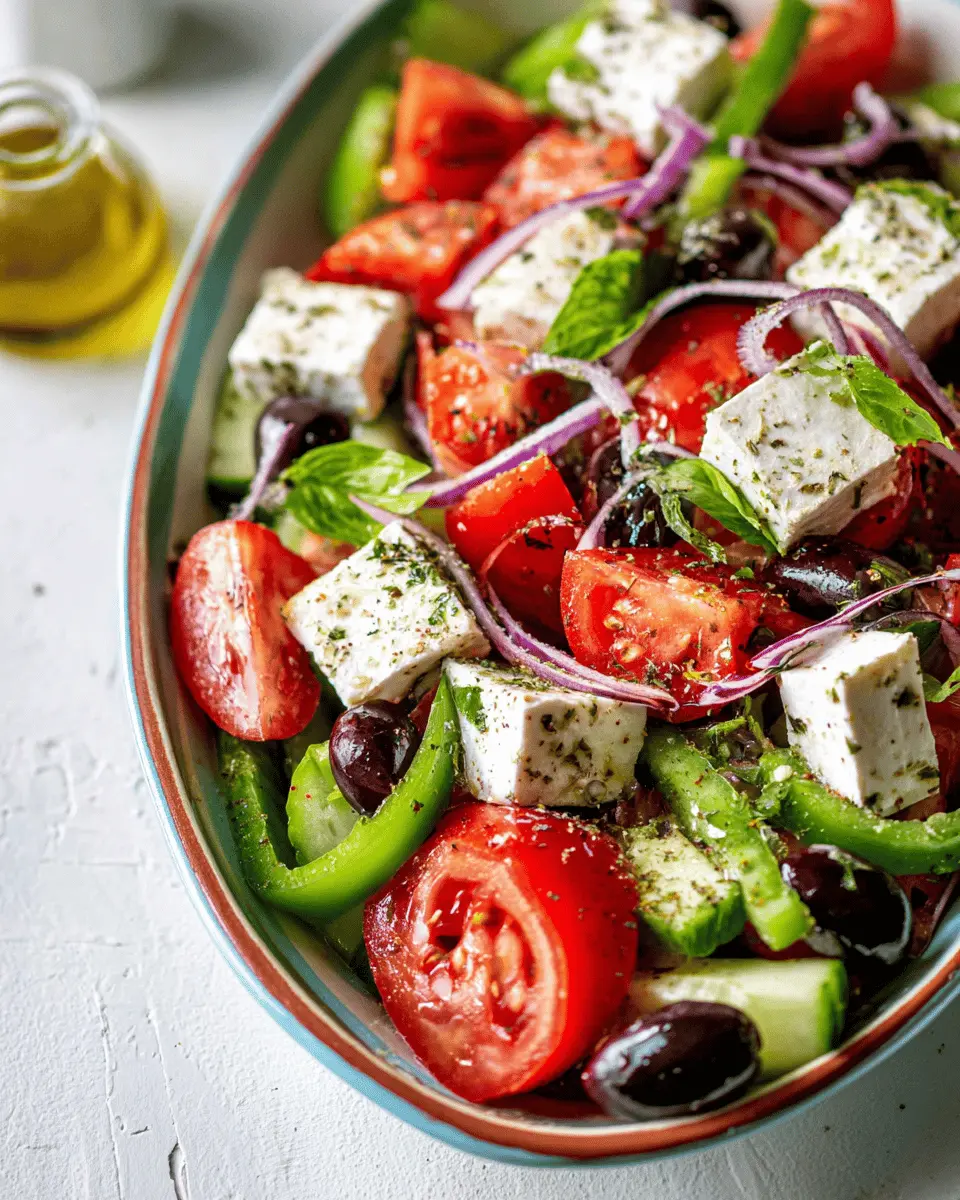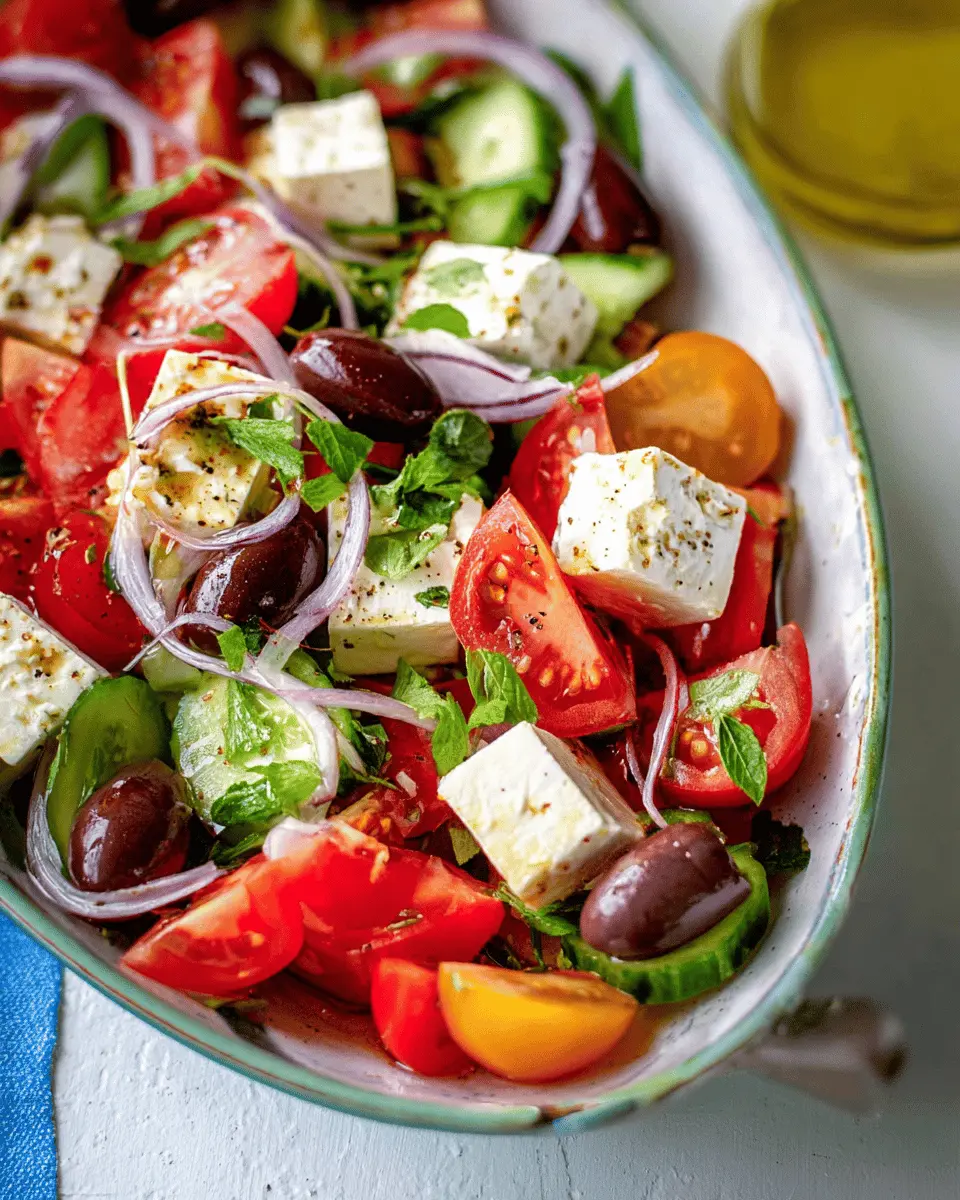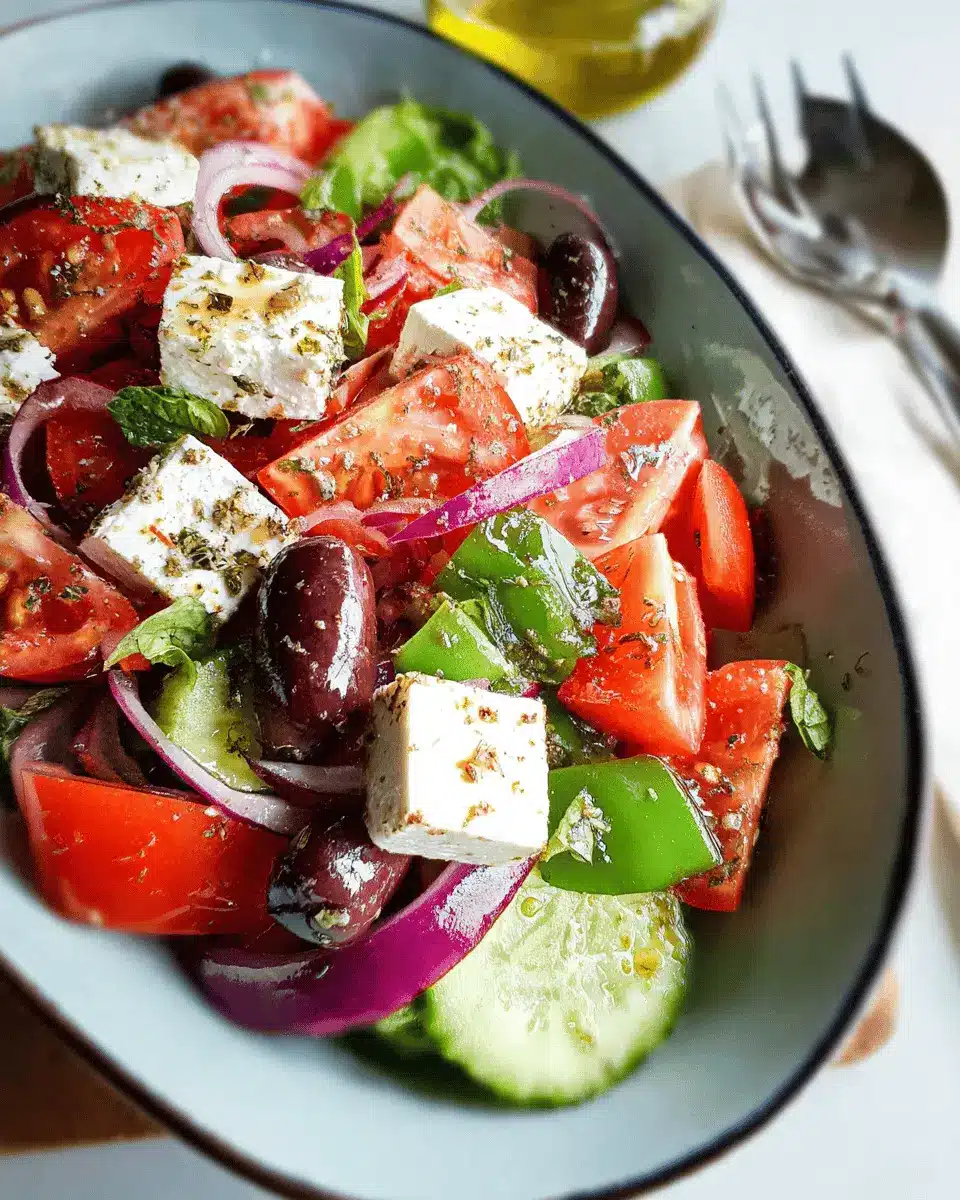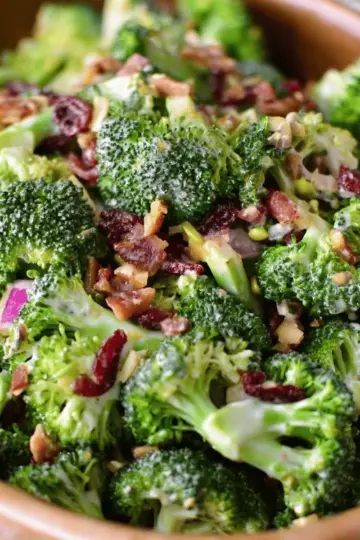Introduction to Greek Salad
Greek salad is more than just a vibrant medley of fresh ingredients; it has become a staple for young professionals navigating their busy lives. Packed with nutritious vegetables like crisp cucumbers, juicy tomatoes, and tangy olives, this dish offers a quick, delicious, and satisfying meal option. But what truly makes Greek salad appealing is its simplicity and adaptability.
What makes Greek salad a go-to for young professionals?
For many young professionals, convenience is key. A classic Greek salad can be whipped up in just a few minutes, making it an ideal choice for lunch breaks or post-work dinners. Furthermore, with its health-conscious ingredients, it aligns with the growing trend of incorporating fresh produce into our diets. The inclusion of feta cheese not only adds creaminess but also packs a protein punch without the need for lengthy cooking processes.
Consider this: according to a survey by the International Food Information Council, over 70% of young adults prefer meals that are quick to prepare yet offer balanced nutrition. Greek salad fits the bill perfectly! You can even prep the ingredients ahead of time, allowing you to throw everything together in a flash when hunger strikes.
So, whether you're aiming to impress at a summer gathering or simply want to enjoy a fresh meal at home, Greek salad stands as a delicious, practical choice—one that emanates sunny Mediterranean vibes with every bite.

Ingredients for Greek Salad
Dressing ingredients
To bring your Greek salad to life, you'll need a simple yet flavorful dressing. Here’s what you’ll need:
- ¼ cup extra-virgin olive oil
- 3 tablespoons red wine vinegar
- 1 minced garlic clove
- ½ teaspoon dried oregano, plus more for sprinkling
- ¼ teaspoon Dijon mustard
- ¼ teaspoon sea salt
- Freshly ground black pepper to taste
Salad ingredients
Now, onto the vibrant salad itself! Here’s what you’ll need for a classic Greek salad:
- 1 English cucumber, cut lengthwise, seeded, and sliced ¼-inch thick
- 1 green bell pepper, chopped into 1-inch pieces
- 2 cups halved cherry tomatoes
- 5 ounces feta cheese, cut into ½ inch cubes
- ⅓ cup thinly sliced red onion
- ⅓ cup pitted Kalamata olives
- ⅓ cup fresh mint leaves
With these ingredients in hand, you're well on your way to creating a fresh and delicious dish that embodies the spirit of the Mediterranean. Grab a large platter, toss everyone together, and get ready to enjoy!
Preparing Greek Salad
Creating a delicious Greek Salad is not only a breeze, but it’s also a fantastic way to enjoy fresh ingredients! Let’s take a step-by-step approach to ensure that your salad is bursting with flavors and textures.
Gather your ingredients
First off, head to the grocery store and pick up the following essentials for your Greek Salad:
-
Dressing:
-
¼ cup extra-virgin olive oil
-
3 tablespoons red wine vinegar
-
1 garlic clove, minced
-
½ teaspoon dried oregano (plus more for sprinkling)
-
¼ teaspoon Dijon mustard
-
¼ teaspoon sea salt
-
Freshly ground black pepper
-
For the salad:
-
1 English cucumber, cut lengthwise, seeded, and sliced ¼-inch thick
-
1 green bell pepper, chopped into 1-inch pieces
-
2 cups halved cherry tomatoes
-
5 ounces feta cheese, cut into ½ inch cubes
-
⅓ cup thinly sliced red onion
-
⅓ cup pitted Kalamata olives
-
⅓ cup fresh mint leaves
Make sure the produce is fresh to get the best flavor. Who doesn’t love crisp veggies in their salad?
Make the dressing
In a small bowl, whisk together the olive oil, red wine vinegar, minced garlic, oregano, Dijon mustard, salt, and several grinds of fresh black pepper. This dressing is what elevates your Greek Salad, so feel free to taste and adjust according to your preference!
For those curious about health benefits, olive oil is rich in antioxidants, while garlic adds a boost of flavor and health benefits. For more details, check out sources like Healthline.
Prepare the vegetables
Now that your dressing is ready, it’s time to prep those vibrant vegetables. Slice the cucumber, chop the green bell pepper, and halve the cherry tomatoes. Don’t forget to thinly slice the red onion as well. Arranging them on a large platter can make your salad visually appealing, giving a feast for the eyes as well!
Assemble the salad
On a large platter, arrange your prepared vegetables, followed by the feta cheese and Kalamata olives. This layered approach not only looks great, but it also enhances the distribution of flavors. Drizzle your handmade dressing over the top—don’t be shy!
Toss and serve
With gentle hands, toss everything together just until combined. You want to avoid mashing your feta; the goal is to maintain those delightful chunky textures. For that perfect finishing touch, sprinkle a bit more dried oregano and layer on your fresh mint leaves. Season to taste!
Your Greek Salad is now ready to be enjoyed—serve it chilled for a refreshing side or an elegant light meal. Bon appétit!

Variations on Greek Salad
Mediterranean Twist on Greek Salad
Give your Greek salad a delightful twist by incorporating roasted red peppers, artichoke hearts, or sun-dried tomatoes. These additions not only enhance the flavor but also conjure that vibrant Mediterranean essence. You can experiment with herbs as well. Consider swapping in fresh basil or dill to complement the existing flavors. For an extra crunch, toss in some toasted pine nuts or slivered almonds.
Add Protein for a Filling Meal
For those days when you need something heartier, adding protein is a game-changer. Grilled chicken or shrimp adds elevating flavor and makes your Greek salad a well-rounded meal. For a vegetarian option, consider chickpeas or quinoa; both deliver a protein punch while keeping it healthy. You could even drizzle in a tahini dressing for added creaminess. It's an easy way to customize your dish to suit your dietary needs!
Ready to try out these variations? Happy cooking!
Cooking tips and notes for Greek Salad
Fresh ingredients make a difference
When it comes to Greek Salad, freshness is key. Opt for ripe, in-season tomatoes, crisp cucumbers, and quality feta cheese in brine for the best flavor. Don’t forget about the herbs—fresh mint and oregano elevate the whole dish! A sprinkle of freshly ground black pepper also adds a nice kick. Investing in extra-virgin olive oil elevates your dressing, making it a flavorful drizzle over your vivid salad.
How to store leftovers
If you have leftovers, store the salad in an airtight container in the refrigerator for up to two days. However, it's best enjoyed fresh, as the crispness of the veggies tends to fade. If you anticipate having leftovers, consider keeping the dressing separate until serving. This way, your Greek Salad remains tasty and crunchy for your next meal!

Serving suggestions for Greek Salad
Pairing with grilled chicken
For an energizing and satisfying meal, try serving your Greek Salad alongside juicy grilled chicken. The savory flavors of charred chicken complement the crisp vegetables and creamy feta beautifully. Simply season the chicken with your favorite herbs and grill it until golden brown. Slice it on top of the salad or serve it on the side for a complete bite that balances protein and freshness.
Serving as a side dish
If you’re looking for a refreshing side dish, Greek Salad fits the bill perfectly! Its vibrant colors and flavors make it an ideal accompaniment to grilled meats, seafood, or even pasta dishes. Consider sprinkling some toasted pine nuts or sunflower seeds on top to add a delightful crunch. This light yet flavorful salad can elevate any meal, making your dining experience feel extra special.
For more inspiration, check out this guide for additional serving ideas!
Time Details for Greek Salad
Preparation Time
Getting your Greek Salad ready will only take about 15 minutes. It’s perfect for those busy days when you want something fresh without spending too long in the kitchen.
Total Time
In just 15 minutes, you can whip up this delicious dish! With no cooking required, you’ll have a vibrant and healthy salad to enjoy in no time. Perfect for lunch, dinner, or a quick snack!
Nutritional Information for Greek Salad
When diving into the refreshing world of a Greek salad, it's good to know what nourishment lies within. Here’s a quick breakdown:
Calories
A serving of Greek salad typically contains around 200 calories, making it a light and satisfying option for lunch or dinner.
Protein
Packed with flavors and nutrients, each serving offers about 6 grams of protein, largely thanks to the feta cheese and olives, which are both great sources.
Sodium
Be mindful of sodium intake; a serving contains approximately 800 mg of sodium, mainly from the feta cheese and olives. Opting for low-sodium versions can help if you're watching your intake.
For more insight on making healthy choices, check out articles on healthline.com or time.com. The vibrant mix of vegetables in a Greek salad not only tantalizes the taste buds but also supports a balanced diet!
FAQs about Greek Salad
What is the origin of Greek salad?
Greek salad, also known as Horiatiki, hails from the beautiful Mediterranean country of Greece. Traditionally, it was a staple of local farmers, made with fresh, seasonal produce and simple ingredients. The combination of crisp vegetables, salty feta cheese, and tangy olives reflects the Mediterranean lifestyle, focusing on fresh, wholesome foods. You can learn more about its cultural significance here!
Can I substitute feta cheese?
If you can't find feta cheese or you’re looking for a different flavor, you can certainly substitute it! Some popular alternatives include goat cheese for a tangy twist or cottage cheese for a lighter option. Note that swapping cheese might slightly alter the salad's classic taste, but it can add a fun spin to your Greek Salad.
How long does Greek salad last in the fridge?
Greek salad is best enjoyed fresh, but if you have leftovers, they will typically last in the fridge for 1-2 days. To maintain the crunchiness of the vegetables, consider storing the dressing separately until you're ready to enjoy your salad again. Keeping it fresh will ensure every bite is as delicious as the first!
Conclusion on Greek Salad
In summary, Greek Salad is not just a dish; it's a celebration of fresh ingredients and Mediterranean flavors. Bursting with nutrients, it makes for a refreshing meal or side. Enjoy making your own version, and don’t hesitate to experiment with ingredients! Your taste buds will thank you.

Greek Salad
Equipment
- bowl
- whisk
- large platter
Ingredients
Dressing
- 0.25 cup extra-virgin olive oil
- 3 tablespoons red wine vinegar
- 1 clove garlic minced
- 0.5 teaspoon dried oregano more for sprinkling
- 0.25 teaspoon Dijon mustard
- 0.25 teaspoon sea salt
- Freshly ground black pepper
For the salad
- 1 medium English cucumber cut lengthwise, seeded, and sliced ¼-inch thick
- 1 medium green bell pepper chopped into 1-inch pieces
- 2 cups cherry tomatoes halved
- 5 ounces feta cheese cut into ½ inch cubes
- 0.33 cup red onion thinly sliced
- 0.33 cup pitted Kalamata olives
- 0.33 cup fresh mint leaves
Instructions
Preparation
- In a small bowl, whisk together the olive oil, vinegar, garlic, oregano, mustard, salt, and several grinds of pepper.
- On a large platter, arrange the cucumber, green pepper, cherry tomatoes, feta cheese, red onions, and olives. Drizzle with the dressing and very gently toss.
- Sprinkle with a few generous pinches of oregano and top with the mint leaves. Season to taste and serve.





Leave a Reply